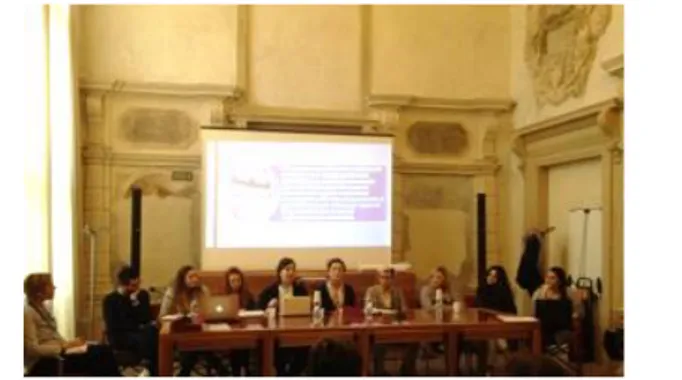Teaching and Learning Together in Higher Education
Issue 20 Winter 2017Fostering “Student Voice” to Improve Teaching &
Learning Methods in Higher Education
Daniela Frison
University of Padua
Claudio Melacarne
University of Siena
Follow this and additional works at:http://repository.brynmawr.edu/tlthe Part of theHigher Education and Teaching Commons
Let us know how access to this document benefits you.
Recommended Citation
Frison, Daniela and Melacarne, Claudio "Fostering “Student Voice” to Improve Teaching & Learning Methods in Higher Education,"
FOSTERING “STUDENT VOICE” TO IMPROVE TEACHING & LEARNING METHODS IN HIGHER EDUCATION
Daniela Frison, PhD in Educational Sciences, PostDoc Research Fellow, Department of Philosophy, Sociology, and Applied Psychology, University of Padua
Claudio Melacarne, Associate Professor, Department of Education, University of Siena
Transforming Teaching Methods and Assessment in Higher Education: the students’ voices
As part of the Employability & Competences (Emp&Co) project, introduced here by Monica Fedeli who is the national coordinator, an event on the topic of Transforming Teaching Methods and Assessment in Higher Education was held in April 2016, aimed at sharing observations on methods, but also university teaching techniques and practices. The protagonists of this event were undoubtedly the teachers, invited to reflect on their personal experiences. However, the true protagonists of the teaching and learning process were the students also invited by the Emp&Co project to make their opinions known about the teaching “experimented with” during their academic path. For this purpose, a group of students belonging to all the universities involved in the Emp&Co project (Universities of Padua, Florence, Siena and Roma Parthenope) was
involved, about one month prior to the event, with the aim of further enriching the many perspectives on the teaching offered by the teachers involved through the voice of students. We therefore activated nine students, divided into three groups, around the topics of the conference, and we asked them to work and reflect on the same number of topics that were strongly linked to teaching and learning methods:
- the participation of students
- the use of feedback by the teachers - listening to the students’ voice
With the aim of stimulating reflections on the identified topics, starting with their own
experiences, we provided some guidelines as a stimulus and which also allowed the groups to follow a common direction, to share during a round table that was scheduled during the conference. Below are the instructions given to the students.
1. In reference to each of the three topics above, we asked each student to: - Focus on an experience connected with one of the three proposed topics
- Share his or her own personal experience with the other members of the same group 2. As a group, we invited the students to focus on a precise academic activity (teaching, project,
etc.) identifying the elements that made it interesting and significant for their learning. Which factors characterised it?
The first group, focused on “participation,” was asked to identify the factors of participation and the factors of non-participation. What is “participation in the university,” and what isn’t?
Thinking about a concept “by opposition,” tracing the elements that identify its opposite, can help to define it. This is why the students were asked to think of the elements that characterise each concept, and at the same time to think of the elements that characterise its opposite, validating them by this dual stimulus to dip into a wider area of experience whether positive or negative.
1 Frison and Melacarne: Fostering “Student Voice” to Improve Teaching & Learning Methods in Higher Education
The second group, focused on the topic of “feedback,” was urged to define the characterising elements of useful/efficient feedback and those that characterise useless/inefficient feedback. While on the one hand attention was particularly focused on the proposal or not of feedback from teachers, on the other hand the group was urged to think about other aspects, such as: Do students ask for feedback? How many times have they directly asked a teacher for feedback during their university career? What were the reasons behind this initiative?
The third group, focused on the topic of “listening to students,” was invited to identify the key factors for listening to the voices of students and to the contrary, as with the previous groups, the key factors of non-listening. In this case, too, in addition to thinking about teachers’ behaviour, the group was asked to reflect in terms of self-evaluation: Do students listen? And how do they do that? What are the key factors of listening by students? And, again, what are the key factors of non-listening?
Lastly, each group was asked to choose an image that represented the two aspects (participation and participation, effective feedback and effective feedback, listening and
non-listening), and starting with the images chosen, that were projected during the round table, to explain their own shared position (figure 1, a photo of the students’ round table).
Space now goes to the voice of the students, as their reflections are reported in the subsequent articles.
Figure 1 The round table with students
2
Teaching and Learning Together in Higher Education, 20 [2017]
